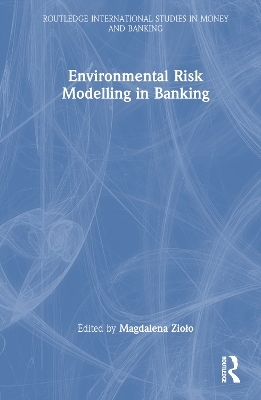
Environmental Risk Modelling in Banking
Seiten
2022
Routledge (Verlag)
978-1-032-31510-2 (ISBN)
Routledge (Verlag)
978-1-032-31510-2 (ISBN)
This book explores the impact of environmental risk on the banking sector and analyzes strategies to mitigate this risk with a special emphasis on the role of modeling.
Environmental risk directly affects the financial stability of banks since they bear the financial consequences of the loss of liquidity of the entities to which they lend and of the financial penalties imposed resulting from the failure to comply with regulations and for actions taken that are harmful to the natural environment.
This book explores the impact of environmental risk on the banking sector and analyzes strategies to mitigate this risk with a special emphasis on the role of modelling. It argues that environmental risk modelling allows banks to estimate the patterns and consequences of environmental risk on their operations, and to take measures within the context of asset and liability management to minimize the likelihood of losses. An important role here is played by the environmental risk modelling methodology as well as the software and mathematical and econometric models used. It examines banks’ responses to macroprudential risk, particularly from the point of view of their adaptation strategies; the mechanisms of its spread; risk management and modelling; and sustainable business models. It introduces the basic concepts, definitions, and regulations concerning this type of risk, within the context of its influence on the banking industry.
The book is primarily based on a quantitative and qualitative approach and proposes the delivery of a new methodology of environmental risk management and modelling in the banking sector. As such, it will appeal to researchers, scholars, and students of environmental economics, finance and banking, sociology, law, and political sciences.
Environmental risk directly affects the financial stability of banks since they bear the financial consequences of the loss of liquidity of the entities to which they lend and of the financial penalties imposed resulting from the failure to comply with regulations and for actions taken that are harmful to the natural environment.
This book explores the impact of environmental risk on the banking sector and analyzes strategies to mitigate this risk with a special emphasis on the role of modelling. It argues that environmental risk modelling allows banks to estimate the patterns and consequences of environmental risk on their operations, and to take measures within the context of asset and liability management to minimize the likelihood of losses. An important role here is played by the environmental risk modelling methodology as well as the software and mathematical and econometric models used. It examines banks’ responses to macroprudential risk, particularly from the point of view of their adaptation strategies; the mechanisms of its spread; risk management and modelling; and sustainable business models. It introduces the basic concepts, definitions, and regulations concerning this type of risk, within the context of its influence on the banking industry.
The book is primarily based on a quantitative and qualitative approach and proposes the delivery of a new methodology of environmental risk management and modelling in the banking sector. As such, it will appeal to researchers, scholars, and students of environmental economics, finance and banking, sociology, law, and political sciences.
Magdalena Zioło□ is Full Professor of Banking and Finance at the Faculty of Economics, Finance and Management, University of Szczecin, Poland.
1. Introduction 2. Environmental risk as a challenge for banking sector 3. Environmental regulations as a framework for environmental risk management in banks 4. Quantitative methods and IT in environmental risk modeling 5. Environmental risk modeling and decision making process 6. The spread of environmental risk and the way to analyze the issue 7. Incorporating environmental risk in banks’ business models 8. Environmental risk and its impact on bankruptcy and insolvency risk
| Erscheinungsdatum | 12.12.2022 |
|---|---|
| Reihe/Serie | Routledge International Studies in Money and Banking |
| Zusatzinfo | 44 Tables, black and white; 21 Line drawings, black and white; 21 Illustrations, black and white |
| Verlagsort | London |
| Sprache | englisch |
| Maße | 156 x 234 mm |
| Gewicht | 520 g |
| Themenwelt | Sozialwissenschaften ► Soziologie ► Spezielle Soziologien |
| Wirtschaft ► Betriebswirtschaft / Management ► Finanzierung | |
| Betriebswirtschaft / Management ► Spezielle Betriebswirtschaftslehre ► Bankbetriebslehre | |
| Wirtschaft ► Betriebswirtschaft / Management ► Unternehmensführung / Management | |
| Wirtschaft ► Volkswirtschaftslehre | |
| ISBN-10 | 1-032-31510-5 / 1032315105 |
| ISBN-13 | 978-1-032-31510-2 / 9781032315102 |
| Zustand | Neuware |
| Informationen gemäß Produktsicherheitsverordnung (GPSR) | |
| Haben Sie eine Frage zum Produkt? |
Mehr entdecken
aus dem Bereich
aus dem Bereich
warum unser Geld stirbt und wie Sie davon profitieren
Buch | Hardcover (2024)
FinanzBuch (Verlag)
30,00 €
Erinnerungen des Chefökonomen
Buch | Hardcover (2024)
Vahlen (Verlag)
24,90 €


